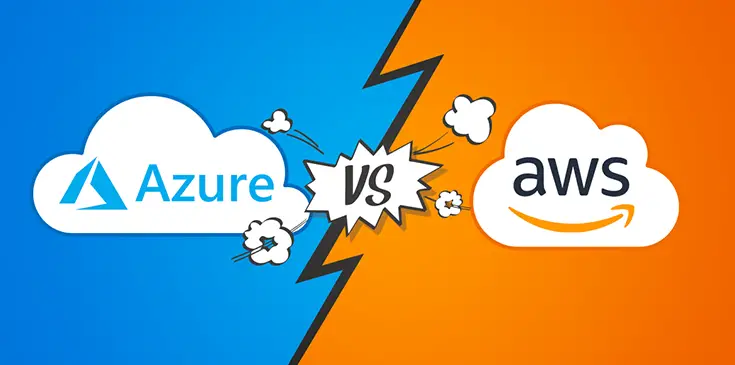Table of Contents
One of the key factors to consider when working in the cloud is cost. Cloud storage is more cost-effective than on-premises since most let you pay-as-you-go. However, without careful planning, your storage budget can quickly spiral out of control.
Read on to learn how to identify the hidden costs in Microsoft Azure and Amazon Web Services (AWS) cloud offerings, and how to lower your costs.
AWS and Azure Payment Models
Before delving into the hidden costs of AWS and Azure, it is important to understand the pricing models of these cloud vendors use.
Azure Pricing
Azure offers three payment models:
- Pay as you go—pay for what you use, what you provision. This model enables you to pay only for the storage you allocate. This means that if you overprovision, you end up paying more.
- Pre-paid subscriptions—buy storage in bulk with a discounted price per unit. This payment model can work well if you know in advance exactly how much storage you will need.
- Enterprise licensing agreements—enterprise agreements can be more cost-effective than pay-as-you-go. However, it comes with a caveat. You have to commit to a year or three-year agreement.
AWS Pricing
AWS offers three payment models:
- Pay as you go—you only pay for what you use. That means you only pay for active instances.
- Reserved instances—you can reserve capacity for services such as Amazon EC2. Reserved instances let you save up to 75% compared to using pay-as-you-go, according to AWS documentation.
- Discounts per usage discounts—AWS offers discounts per usage for storage services such as S3, reducing the price per GB.
AWS and Azure offer free tiers, which you can leverage to cut back on costs. However, to get to a point in which you truly make the most out of the various cloud tiers, you need to take into account all of the factors that influence the pricing.
5 Hidden Costs You Should Be Aware Of
Having workloads in the cloud means you need to account for cloud storage payment in your monthly operational budget. Cloud newbies often over-provision because they’re afraid of losing capacity. This leads to high monthly cloud bills, bloated by a wide range of unnecessary add-on charges. Below, you’ll find a review of the most common hidden charges.
#1. Data transfer charges
New cloud users are often surprised when they see high data transfer chargers on their first monthly bill. Uploading data to the cloud is free but transferring it out is not. Outbound transfer charges vary according to your region. In addition, transferring data between regions is more costly. This charge includes the S3 replication of data across availability zones.
#2. Idle instances
Just as a car continues consuming gas when the engine is running, unused instances continue accruing costs if not stopped. While easy resource provisioning is one of the perks of pay-as-you-go storage, you can easily go overboard.
You can spin up a number of virtual machines in Azure without using them afterward. It’s important to remember that even if you stop the virtual machine, the provisioned network and compute resources remain reserved.
The same happens with EC2 instances. You can easily set up a number of instances and continue paying for volumes even after you no longer need them. You can stop the instance, but the EBS volumes attached to it will continue accruing charges. More on than in the next point.
#3. Unattached volumes
When you stop or terminate an EC2 instance, the root volume is deleted by default. However, the attached EBS volumes continue running. Moreover, if you leave Solid State Drive (SSD)
backed volumes unattached the cost can continue to pile up. SSD volumes cost double than Hard Disk Drive (HDD) volumes. Azure also keeps the attached storage running when you terminate the virtual machine.
#4. Snapshots without volumes
In AWS, when you terminate an instance, you not only need to manage the EBS volumes but also the EBS snapshots.
You can back up an EBS volume by creating a snapshot of it. The initial snapshot makes a copy of the entire volume, but can later take subsequent snapshots. These function as incremental backups. When you delete a volume, you should check if there are old snapshots you don’t need. Then, delete them to lighten the storage load.
Azure only supports full point-in-time snapshots, which can increase costs. You can create several snapshots from the same managed disk, which can afterward remain unused. It is important to remember to delete snapshots after terminating virtual machines.
#5. Underutilized prebooked capacity
This is perhaps the most common rookie mistake every new cloud user makes. Both platforms offer big discounts for pre-booked capacity. The issue with this is that it works like a credit system against the type of machine you reserve.
For example, Microsoft Azure lets you pre-purchase storage and computing for one year. AWS lets you reserve instances for one or three years term.
You need to use the allocated storage in full to make the most of your discount through the entire year or three years term. You can do that by modifying the machine specifications in Azure or the Reserved Instances in AWS to match the resources.
3 Tips to Reduce Cloud Storage Costs
Here are some tips that can help you reduce the cloud storage overall costs.
#1. Use a calculator
Both AWS and Azure provide calculators to better understand and control your costs, and there are a number of online free and paid options you can use. A calculator can give you details on total costs, as well as the per-gigabyte cost for the different services.
#2. Use reserved instances
AWS Reserved instances can help you keep the costs down by allocating in advance the storage you need. As long as you keep its usage updated, it can be a good practice to reduce storage costs.
#3. Tag the resources
Tagging resources can help you keep track of resource usage, avoiding unused VMs and volumes. Be sure to create a tagging system that makes sense for you and your collaborators. Keep the organization system consistent, and you’ll be able to properly monitor expenses.
Conclusion
Understanding the pricing and payment model is the first step to managing your cloud storage costs. You can do it by reading the documentation on the AWS and Azure website. The calculators also enable you to estimate storage costs. The calculator can also help you keep track of hidden costs. You can significantly reduce your monthly storage costs by reducing these often-overlooked costs.




